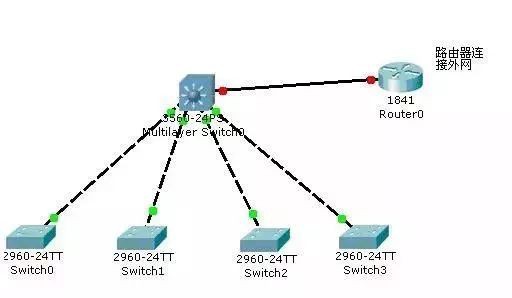Network topology design in the low voltage project
Leave a message
Network topology design is divided into two types: single-core and dual-core.

01 Single-core network topology design
The single-core network refers to an environment in which there is only one core switch in the entire network environment. This topology is suitable for small-scale enterprises that do not rely heavily on the network. Since the price of core equipment is relatively expensive, such as Cisco equipment, most enterprises use a single-core network topology design.
However, this design has a fatal flaw in that it is prone to single-point failures. When engineers realized this problem, the second topology structure was created.
02 Dual-core topology structure

The so-called dual-core means that there are two core switches in the entire network environment. The characteristics of this environment are good stability, high transmission performance, and high transmission speed.
The core switch is the central node of the entire network, so the requirements for the core switch are very high. Equipped with two core switches as the core switching nodes of the entire network completely avoid the impact of single-point failures on the entire network, thereby improving the security and stability of the network.
Because the cost of core switches is relatively high, and the investment and maintenance costs of two core switches are also high, generally only telecommunications, finance, and other enterprises adopt this dual-core topology design structure.
Whether it is a single-core or dual-core topology structure, there are three points to note:
If there are servers in the network environment, the servers should be connected to the aggregation switch, and sometimes the server can also be connected to the core switch.
Since the core layer is responsible for high-speed data exchange, some routing policies are generally configured in the aggregation layer.
The core layer, aggregation layer, and access layer are the standard three-layer structure. If the enterprise network scale is not large, the aggregation layer can be omitted, and it becomes a core layer and an access layer.
Next, let's talk about the design of the network exit, which is how to connect to the Internet.
There are currently three common methods:
Proxy server access is commonly used in small and medium-sized network environments.
Router connection to the Internet. The router provides multiple interface types, can also connect to different networks, and supports many communication protocols. It is widely used in medium-sized enterprises.
It is divided into single exit design and dual exit design according to whether the enterprise network is connected to one ISP or two ISPs.
Single exit design
If the enterprise network does not require high INTERNET requirements, a single exit design can be adopted, and then the routing strategy can be configured on the access device.
Proxy server access scheme
Proxy server access is based on software implementation and only requires a desktop computer with a better configuration. This scheme has a lower investment and is suitable for small enterprises.

Router access scheme
The router supports many interface types, and users can access the Internet in various ways. The router also supports multiple protocols and is suitable for different network environments, generally used in medium-sized enterprises.

Some enterprises usually need to save costs, so they replace the router in the figure above with a broadband router and the switch with a hub. Because they need to save costs, and their school does not have high requirements for the network.

Dual exit design
If the user has high requirements for the network, a dual exit design can be adopted, that is, two links are used to access the INTERNET:
Proxy server access scheme, using two proxy servers, these two proxy servers are connected to different operators, such as one server connecting Unicom and one server connecting Telecom.

Router access scheme, using a router to connect to two different operators, and the routers need to work with jack modules







